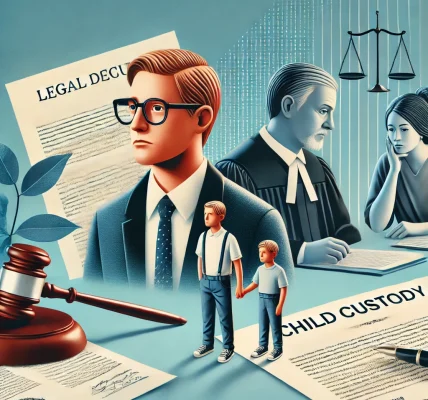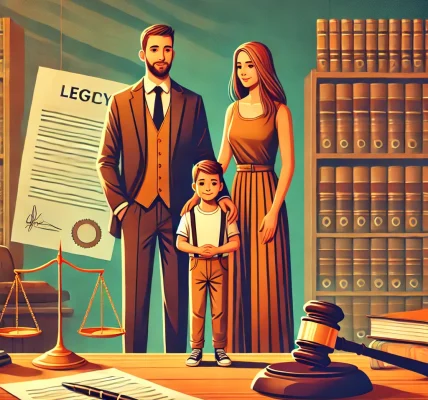Domestic violence is a serious legal and social issue that affects individuals and families across the world. Understanding the laws surrounding domestic violence and the protection orders available can help victims seek safety and justice. This guide provides a comprehensive overview of domestic violence laws and legal remedies available to survivors while ensuring a legally safe and informative discussion.
What is Domestic Violence?
Domestic violence refers to abusive behaviors used by one person to control or harm another in an intimate or familial relationship. It can occur between spouses, partners, family members, or individuals living in the same household.
Types of Domestic Violence:
- Physical Abuse: Hitting, slapping, choking, or any other physical harm.
- Emotional Abuse: Verbal threats, humiliation, intimidation, and controlling behavior.
- Sexual Abuse: Forced sexual activity, harassment, or coercion.
- Financial Abuse: Controlling financial resources, restricting access to money or employment.
- Psychological Abuse: Manipulation, gaslighting, and threats of harm.
- Technological Abuse: Stalking, cyberbullying, or unauthorized access to digital accounts.
Domestic Violence Laws: Key Legal Protections
Domestic violence laws vary by country and state, but they typically provide legal protections for victims and criminal consequences for offenders.
1. Criminal Laws Against Domestic Violence
Most jurisdictions classify domestic violence as a criminal offense. The severity of charges depends on the nature and extent of the abuse.
- Misdemeanor Charges: Minor physical harm, harassment, or verbal threats.
- Felony Charges: Serious bodily harm, sexual assault, or repeated offenses.
- Violation of Protection Orders: Considered a separate crime with additional penalties.
2. Civil Protections for Domestic Violence Victims
Victims of domestic violence have legal avenues to protect themselves and seek justice through civil law mechanisms:
- Restraining Orders (Protection Orders)
- Emergency Shelter Assistance
- Custody and Visitation Rights
- Financial Support (Spousal or Child Support)
What is a Protection Order?
A protection order (restraining order) is a legal order issued by a court that restricts an abuser’s ability to contact or approach the victim. Protection orders vary depending on jurisdiction but generally include:
1. Types of Protection Orders:
- Emergency Protection Orders (EPOs): Issued immediately by law enforcement or a judge to provide temporary safety.
- Temporary Protection Orders (TPOs): Lasts a few weeks until a court hearing is held.
- Permanent Protection Orders: Can last for years, depending on the court’s ruling.
- No-Contact Orders: Specifically prevents all communication with the victim.
- Stay-Away Orders: Restricts the abuser from coming near the victim’s home, workplace, or school.
2. How to Obtain a Protection Order
The process of obtaining a protection order varies but generally includes the following steps:
- Filing a Petition: The victim submits a request to the court, stating the nature of the abuse.
- Court Review: A judge may issue a temporary protection order immediately.
- Hearing: The court schedules a hearing where both the victim and the accused can present evidence.
- Final Order Issued: Based on the evidence, the judge may issue a long-term protection order.
3. Consequences of Violating a Protection Order
If an abuser violates a protection order, they may face:
- Arrest and criminal charges
- Fines or imprisonment
- Additional legal penalties
Legal Rights of Domestic Violence Victims
Victims of domestic violence have several rights under the law, including:
- The right to report abuse to law enforcement.
- The right to seek shelter in a safe house or domestic violence shelter.
- The right to file for a protection order against the abuser.
- The right to custody of children in cases where abuse affects minors.
- The right to medical care and counseling for recovery.
How to Seek Help for Domestic Violence
If you or someone you know is experiencing domestic violence, consider the following steps:
- Call Emergency Services: If you are in immediate danger, dial emergency services (911 or the local equivalent).
- Contact a Domestic Violence Hotline: Many countries have support hotlines that provide assistance and resources.
- Seek Legal Help: Consult a lawyer or legal aid organization for advice on filing a protection order.
- Find a Safe Place: Shelters and support groups can provide temporary housing and emotional support.
- Document Evidence: Keep records of abuse, including photos, messages, and witness statements.
Legal Considerations for the Accused
While domestic violence laws aim to protect victims, it is also essential to consider the legal rights of those accused of abuse.
- Accused individuals have the right to a fair trial and legal representation.
- False allegations of domestic violence can have serious legal consequences.
- Courts require evidence and due process before convicting an accused individual.
- Violation of legal procedures in domestic violence cases can result in dismissal of charges.
Conclusion
Domestic violence laws and protection orders serve as essential tools to safeguard victims and prevent further harm. If you or someone you know is facing domestic violence, seeking legal help and using available resources can make a significant difference.
Understanding your legal rights and the legal process can empower victims to take action against abuse while ensuring that the legal system is fairly applied to all parties involved.
If you are in danger, do not hesitate to contact emergency services or a legal professional for immediate assistance.




